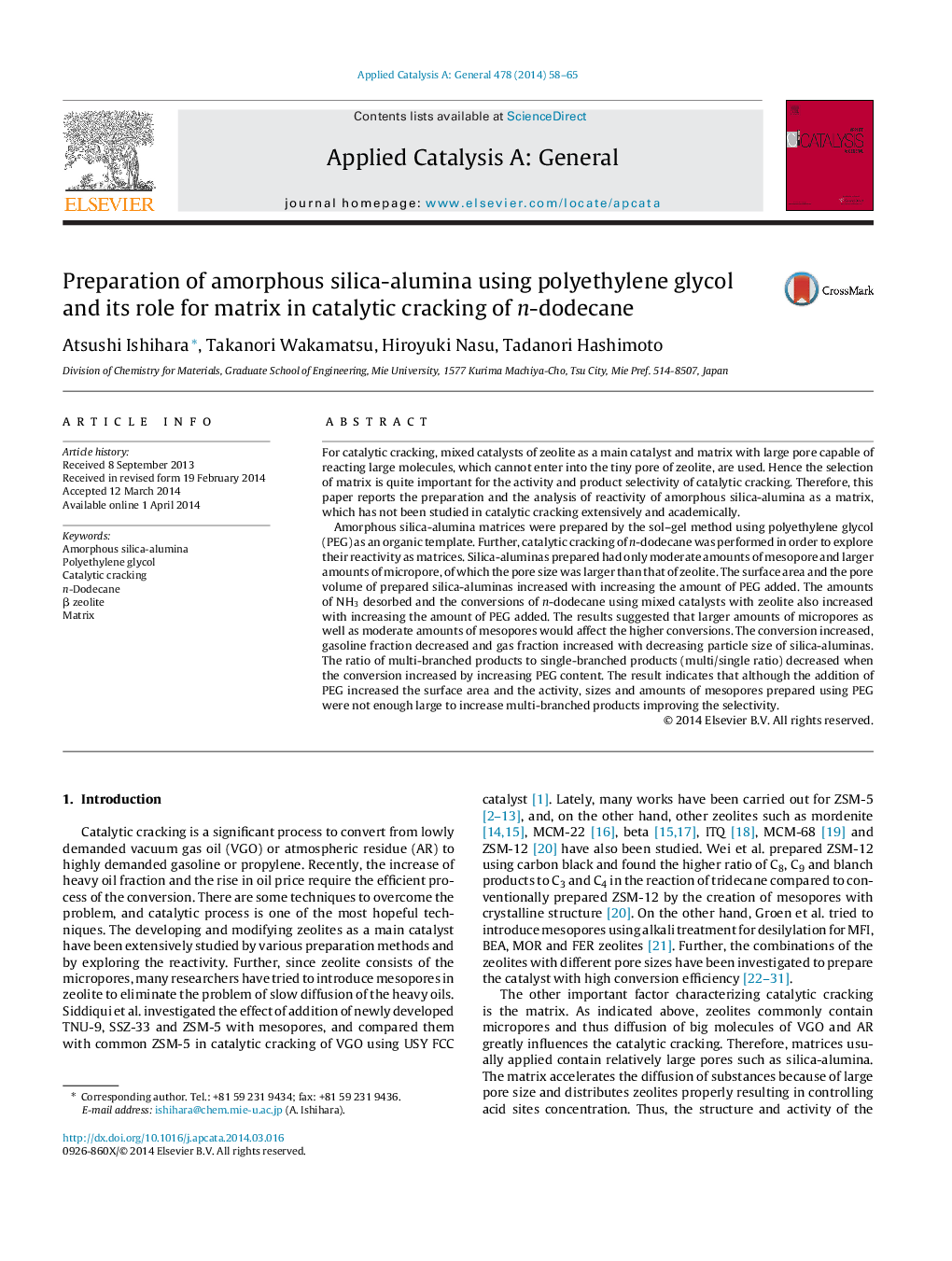| کد مقاله | کد نشریه | سال انتشار | مقاله انگلیسی | نسخه تمام متن |
|---|---|---|---|---|
| 39673 | 45831 | 2014 | 8 صفحه PDF | دانلود رایگان |
• Silica-aluminas prepared using PEG consisted of larger micropores than zeolite.
• Silica-alumina prepared using larger amounts of PEG had moderate amounts of mesopore.
• With increasing PEG content, surface area and pore volume increased for all samples.
• Both larger micropores and smaller mesopores affected the higher conversions.
• The presence of larger micropores did not affect the selectivity of branched product.
For catalytic cracking, mixed catalysts of zeolite as a main catalyst and matrix with large pore capable of reacting large molecules, which cannot enter into the tiny pore of zeolite, are used. Hence the selection of matrix is quite important for the activity and product selectivity of catalytic cracking. Therefore, this paper reports the preparation and the analysis of reactivity of amorphous silica-alumina as a matrix, which has not been studied in catalytic cracking extensively and academically.Amorphous silica-alumina matrices were prepared by the sol–gel method using polyethylene glycol (PEG) as an organic template. Further, catalytic cracking of n-dodecane was performed in order to explore their reactivity as matrices. Silica-aluminas prepared had only moderate amounts of mesopore and larger amounts of micropore, of which the pore size was larger than that of zeolite. The surface area and the pore volume of prepared silica-aluminas increased with increasing the amount of PEG added. The amounts of NH3 desorbed and the conversions of n-dodecane using mixed catalysts with zeolite also increased with increasing the amount of PEG added. The results suggested that larger amounts of micropores as well as moderate amounts of mesopores would affect the higher conversions. The conversion increased, gasoline fraction decreased and gas fraction increased with decreasing particle size of silica-aluminas. The ratio of multi-branched products to single-branched products (multi/single ratio) decreased when the conversion increased by increasing PEG content. The result indicates that although the addition of PEG increased the surface area and the activity, sizes and amounts of mesopores prepared using PEG were not enough large to increase multi-branched products improving the selectivity.
MP plots measured by N2 adsorption for amorphous silica-alumina and zeolite-silica-alumina catalysts of P183 series. P183: silica-alumina, MAT: mixed catalyst with zeolite, sp: small particles, 6000: average molecular weight of PEG, average molecular weight of other catalysts was 400.Figure optionsDownload high-quality image (139 K)Download as PowerPoint slide
Journal: Applied Catalysis A: General - Volume 478, 20 May 2014, Pages 58–65
